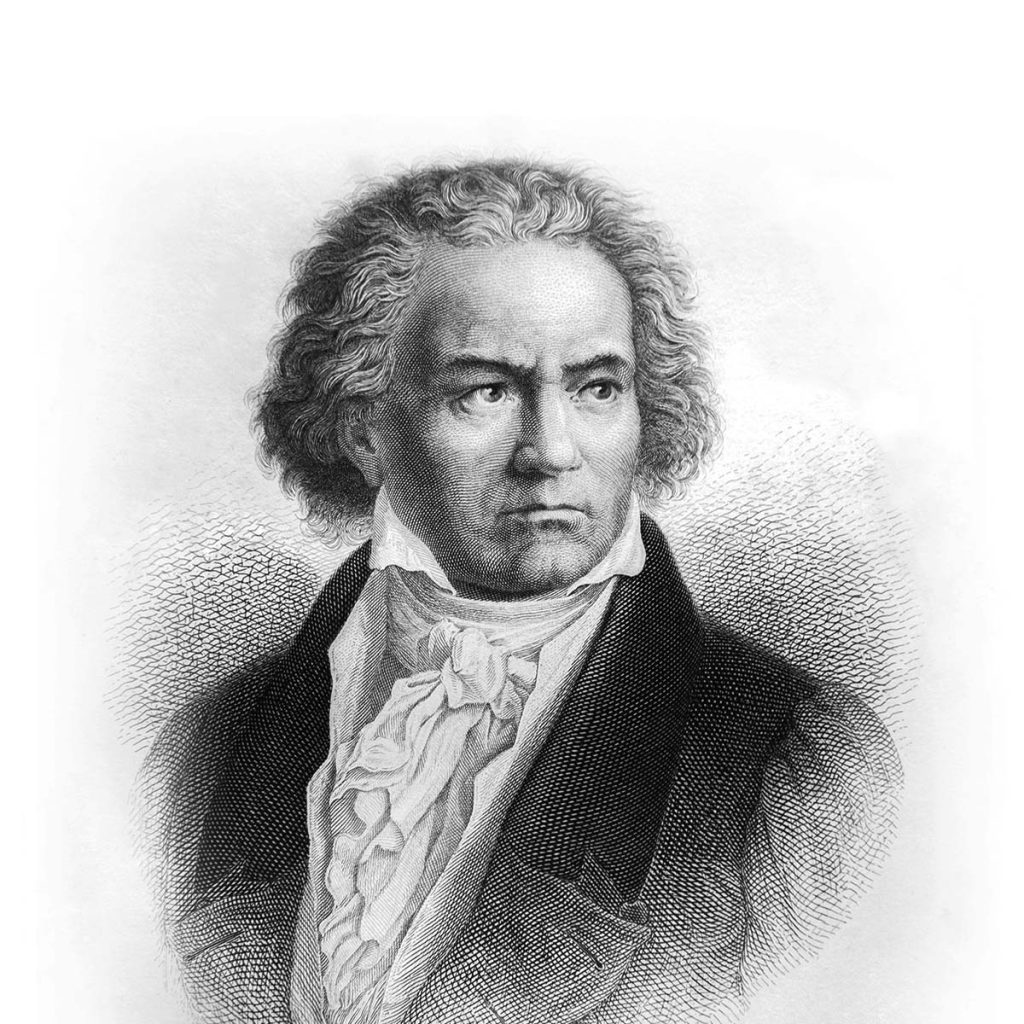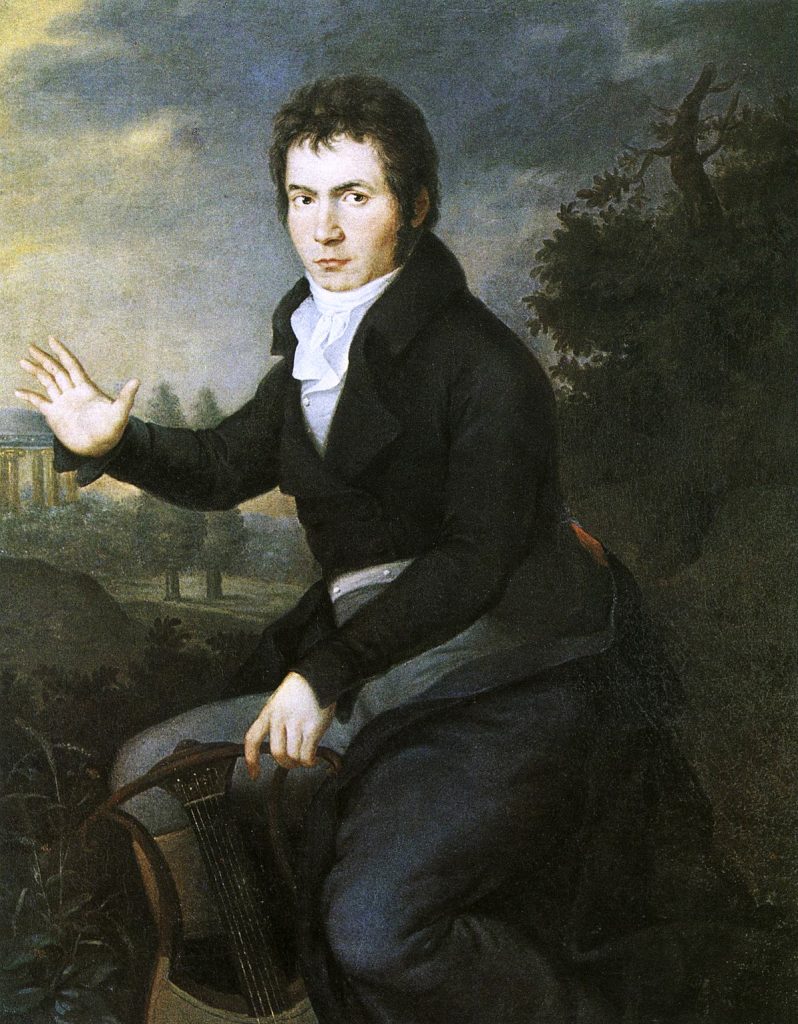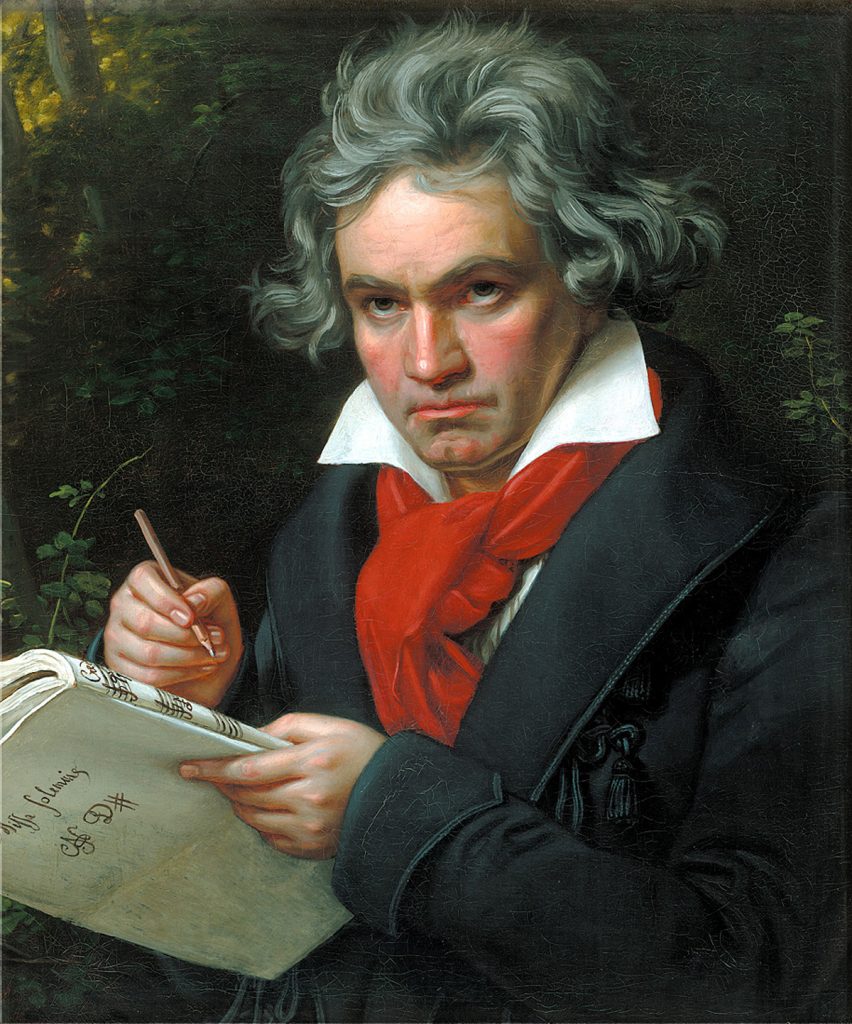
THIS WEEK IN PIANO HISTORY, Beethoven composed his infamous bagatelle Für Elise WoO 59 on April 27, 1810. The short piece is built around a recurring theme that is unceasingly popular with pianists of all ages.
One of the central questions regarding this piece is to whom it was written. Scholarship remains unclear about the identity of “Elise.” The autograph manuscript of the work is lost and there is speculation that perhaps the title was originally Für Therese.1 Other scholars, such as Klaus Martin Kopitz, suggest that ‘Elise’ was in fact the singer Elisabeth Röckel.2 She was a close friend throughout Beethoven’s life and was married to Austrian composer Johann Nepomuk Hummel. Röckel’s close relationship is obvious based on her visit to Beethoven just a few days before his death on March 26, 1827.3 Whether Röckel is the true dedicatee of Für Elise remains unproven, but she is certainly a likely candidate.


Für Elise is classified as a bagatelle in the form of a rondo. The repeating opening theme comes back three times, creating an ABACA form. Although the first section is manageable technically, the second and third sections pose significant challenges to the performer with thirty-second notes in the B section as well as repeated notes, arpeggios, and a chromatic scale in the C section. Besides the popularity of the opening theme, the work remains popular perhaps due to its moody nature and dramatic changes from melancholy to joy to mystery and back. Listen to this recording by pianist Lang Lang.
The piece is listed on the Royal Conservatory of Music’s 2022 Piano Syllabus as a Level 7 selection and is comparable in difficulty to the easier Bach inventions and other late-intermediate sonatinas. One of the challenges in approaching this work is carefully choosing a tempo that is manageable in the more virtuosic sections of the work, but is also not dragging at the beginning. Interested to learn more about Für Elise? Check out this article written and edited by Marvin Blickenstaff on the work, which provides teaching tips, a practice plan, and more!
OTHER RESOURCE YOU MIGHT ENJOY:
- MAGAZINE ARTICLE: How do you teach measure groupings (hypermeter) to your intermediate-level students? By Bruce Berr
- MAGAZINE ARTICLE: What Do You Do When Adults Are Determined to Play Repertoire They Can’t Possibly Play Well? Part 1: Shift to Alternative Choices By Brenda Dillon
- REPERTOIRE VIDEO SERIES: Beethoven: Sonatina in G Major By Suzanne Newcomb
- REPERTOIRE VIDEO SERIES: Demystifying Tempo: Beethoven’s Slow Movements by Carol Leone
- REPERTOIRE VIDEO SERIES: Beethoven: Sonata in F Minor, Op. 2 No. 1 by Andrew Cooperstock
- Use our search feature to discover more!
Sources
- Joseph Kerman, Alan Tyson, Scott G. Burnham, Douglas Johnson, and William Drabkin, “Beethoven, Ludwig van,” Grove Music Online, 2001, Accessed 20 Mar. 2023, oxfordmusiconline-com.uc.idm.oclc.org/grovemusic/view/10.1093/gmo/9781561592630.001.0001/omo-9781561592630-e-0000040026.
- Klaus Martin Kopitz, “Beethoven’s ‘Elise ‘ Elisabeth Röckel: A Forgotten Love Story and a Famous Piano Piece.” Musical Times (Winter, 2020), 9.
- Ibid.
Kerman, Joseph, Alan Tyson, Scott G. Burnham, Douglas Johnson, and William Drabkin. “Beethoven, Ludwig van.” Grove Music Online. 2001; Accessed 20 Mar. 2023. oxfordmusiconline-com.uc.idm.oclc.org/grovemusic/view/10.1093/gmo/9781561592630.001.0001/omo-9781561592630-e-0000040026.
Kopitz, Klaus Martin. “Beethoven’s ‘Elise ‘ Elisabeth Röckel: A Forgotten Love Story and a Famous Piano Piece.” Musical Times Winter, 2020, 9-26.